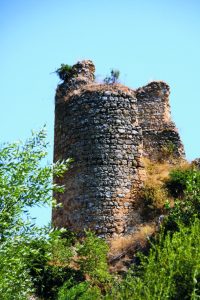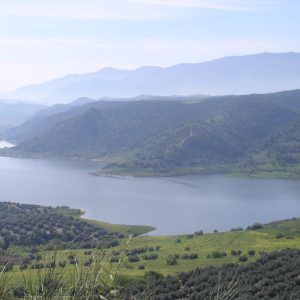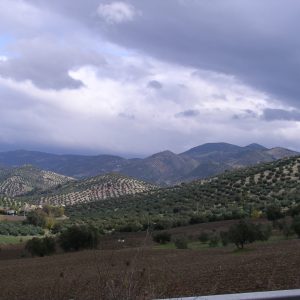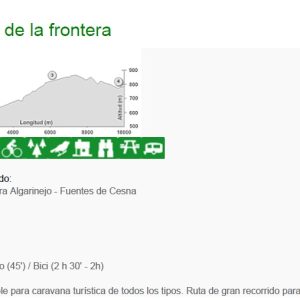This route starts from the connection with Route 1 (Ruta de la Agricultura). Its route runs along the regional network (NO-2) which, upon reaching the Puerto Málaga node, turns to the left between olive groves, farmhouses, mills and well-preserved holm oak groves.
After ascending more than 300 m above the profile of the route, it ends at the “Noria de Cesna” after going along the NO-12 to “Tierras de Cesna” and thus linking up with the “Red Parque Cesna”.
It is here where the exceptional panoramic views of the central area of the municipality (Sierras de Castillejos – Chite) or even of the Subbética Natural Park to the north of the itinerary are obtained.
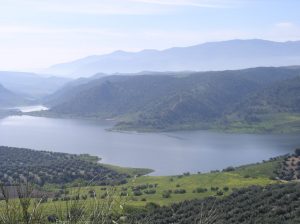
environmental
It should not come as a surprise that on this tour we can more clearly appreciate the morphology that characterizes the municipalities of western Granada: a relief of hill-like hills on interior Quaternary deposits, where the “Serranía de las Cabreras” stand out at the beginning and the ” Serranías de Cesna”.
However, despite the limestone nature of its materials, we will hardly find large-flow water springs, only few springs or mine shafts.
In this typical Andalusian countryside, excellent patches of Mediterranean forest are still preserved, accompanied by a whole cast of thorny and aromatic plants and the occasional widely scattered Resin Pine. It should be noted, due to the exceptional size of their feet, the specimens of Quejigo and Encina found in the “Cortijo Mahoma – Cortijo Ventorro” area, as well as in the “Marrojuelas” area. The environment of the route is also rich in birds and mammals, especially those that feed on carnivores, favored by the abundance of Common Hare and Red Partridge.
We will be able to observe numerous specimens in dispersal and range of species such as the Short-toed Eagle, the Golden Eagle, the Common Vulture, most certainly coming from the Cordoba subbeticas, the Honey Buzzard, the Common Buzzard, the Eagle Owl, the Owl, and mammals such as the Badger, the Garduña and the Genet.
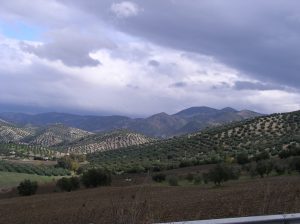
Cultural
The border between the Muslim territory of the Nazarite State of Granada and the Christian one remained for almost 300 years, between the beginning of the 13th century and the end of the 15th century when the area of Torre Pesquera and Cesna was conquered after various fluctuations of the territorial limits. . The settlement on the border was very intense since it was an appropriate place for the exchange of products between both societies; the
The lands of Cesna were conquered by Syrian settlers around the year 917, after the wars against the Mozarabic (Christian) populations that rebelled under the leadership of Omar Ibn Hafsun. A long time and an intense historical settlement have generated an extensive architectural heritage, highlighting “Torre Pesquera” and “Castillo de Cesna” as defensive bastions of the Nasrid border.
The repopulations of the 16th century and the distribution of lands attracted numerous Castilian populations to these fertile lands and rich in water, whose most visible product is the large number of farmhouses and haciendas that line the route. Outstanding enclaves such as the “Marrojuelas” Farmhouse, “Cruz de Bujeo” Farmhouse, “Casa de Bujeo Alto”, “Nevazo” Farmhouse, “Ventorro” Farmhouse, “Mahoma” Farmhouse, “La Gancha” Farmhouse and the unique “Noria de la Gancha “, one of the last norias-well moved with animals.
